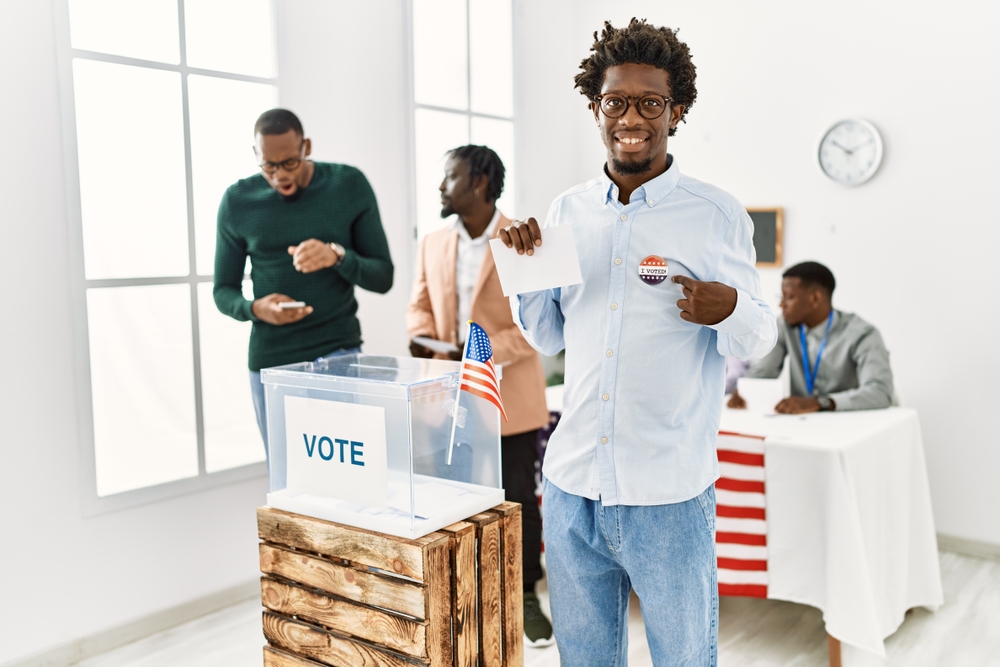A new $4 million initiative called Vote To Live is set to launch, aiming to engage and mobilize Black male voters in key battleground states ahead of Election Day. The effort is spearheaded by the Collective PAC, one of the largest political action committees supporting Black candidates.
Quentin James, founder and president of the Collective PAC, emphasized the initiative’s nonpartisan approach to encouraging Black men to exercise their voting rights. The campaign will focus on:
• Educating Black men on voter registration processes
• Providing free transportation to polling places during early voting
• Hiring community members for direct neighborhood engagement
• Hosting events at historically Black colleges and universities (HBCUs)
Vote To Live will primarily target six crucial states: Georgia, Michigan, North Carolina, Ohio, Pennsylvania and Wisconsin, with additional outreach in Arizona and Nevada. The goal is to register 50,000 Black voters and provide 100,000 Uber vouchers for round-trip transportation during early voting.
James highlighted the alarming trend of misinformation targeting Black men online. “Black men are now one of the No. 1 targets for misinformation online,” he stated. The initiative aims to combat misleading narratives and provide accurate information about the voting process.
The campaign seeks to counter substantial investments aimed at persuading Black men to shift their political allegiance from Democrats to former President Donald Trump. Vote To Live aims to equip Black men with information to make informed decisions.
In addition to direct outreach, the initiative plans to partner with Turnout the Vote, hiring 250 “voting ambassadors” to engage their communities about the electoral process. A get-out-the-vote bus tour, in collaboration with the Service Employees International Union and the NAACP, will make stops in battleground states.
To galvanize support, Vote To Live will host homecoming parties at HBCUs and organize “party at the polls” events in the six key states on October 26. These events aim to create a festive atmosphere around voting and encourage early turnout.
The campaign plans to collaborate with celebrities, athletes and social media influencers for advertising and promotional efforts, aiming to reach a broader audience and inspire more Black men to participate in the electoral process.
This initiative represents a significant effort to mobilize Black male voters in a critical election year. By focusing on education, transportation and community engagement, the campaign aims to empower Black men to take an active role in shaping their political future.
The Vote To Live campaign emerges at a time when voter engagement and turnout are increasingly crucial in determining election outcomes. With the presidential race projected to be close, the influence of Black male voters could indeed be significant.
The focus on combating misinformation is particularly timely. In an era of digital information overload, providing accurate, accessible information about voting processes and rights is essential for maintaining the integrity of the democratic process.
The initiative’s emphasis on early voting and providing transportation addresses practical barriers that often prevent people from casting their ballots. By removing these obstacles, Vote To Live aims to increase participation rates among a demographic that has historically faced challenges in accessing the polls.
The engagement of HBCUs is another strategic element of the campaign. These institutions have long been centers of political activism and civic engagement in the Black community. By tapping into this network, Vote To Live can leverage existing community structures to amplify its message.
However, the campaign’s success will likely depend on its ability to resonate with a diverse range of Black male voters across different age groups and socioeconomic backgrounds. The use of celebrities and influencers may help in reaching younger voters, but engaging older, more established community members may require different strategies.
Moreover, the nonpartisan nature of the campaign presents both opportunities and challenges. While it allows for a broader appeal, it also requires carefully navigating the highly polarized political landscape without appearing to favor any particular party or candidate.
As Election Day approaches, initiatives like Vote To Live will play a crucial role in shaping voter turnout and engagement. Their impact could extend beyond this election cycle, potentially influencing long-term patterns of civic participation among Black men.
Ultimately, the success of Vote To Live and similar campaigns will be measured not just in voter registration numbers or turnout rates, but in the degree to which they empower Black men to become active, informed participants in the democratic process.




